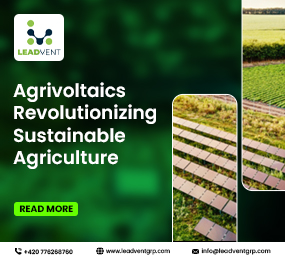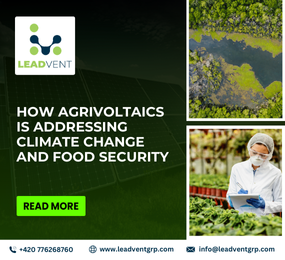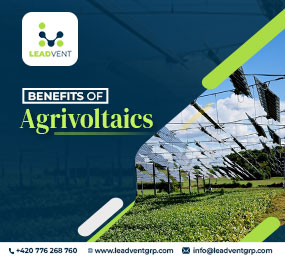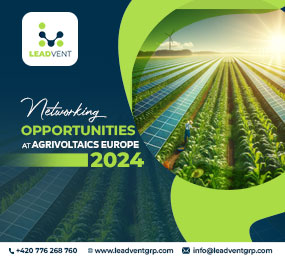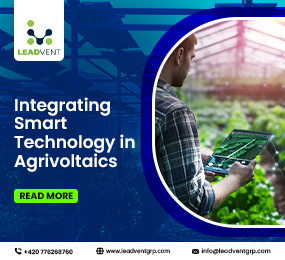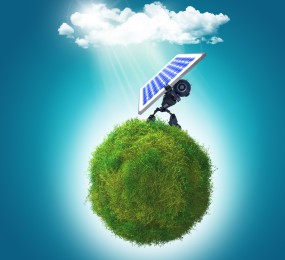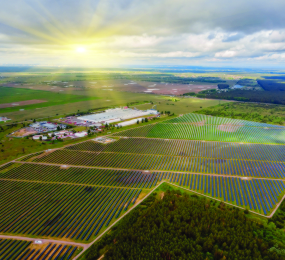As the global community rallies to mitigate the devastating effects of global warming and transition towards a more sustainable energy future, it has become significant to take the agriculture sector towards a new direction. The agricultural sector from the beginning has remained the backbone of the economy of the nations worldwide, while it is enabling the mainstream society to move towards a greener future. The rise of agricultural technology in this sphere is accelerating the pace of agrivoltaics and presenting a range of opportunities to the agricultural communities.
3rd Annual Agrivoltaics Europe, 2024 emerges as a benevolent force that through insightful discussion can throw light on the sustainable future of e-fuel and at the same time, encompass areas like strategic usage of solar energy, unfolding its hidden benefits and so on. Here in this blog, to offer you a glimpse of agrivoltaics and its preponderance in the sphere of agriculture, we are going to highlight the opportunities that it brings. Let’s get started with this.
Understanding the Fundamentals of Agrivoltaics
Agrivoltaics in reality stands for the coexistence of the solar panels and agricultural agents that aid in diversification of the revenue stream of the farmers and the ones who are closely associated with the farming. This approach allows for a combination of agricultural production with the ceaseless generation of renewable energy. This practice brings dual benefits for all and contributes to the efficient usage of the land. In this process, you can rest assured that your land will become more fertile in comparison to the average one. Once you are acquainted with the nitty-gritty aspect of Agrivoltaics, it is high time to move to the advanced ideas for indulging in the best practices.
Role of Agrivoltaics in Energy Transition
Maximisation of the Land Efficiency
One of the most significant attributes of Agrivoltaics is its ability to maximize land usage. According to the report of the International Renewable Energy Agency, capitalisation of just 1% of agricultural land for solar panels could yield substantial renewable energy capacity. In addition to that, it can contribute significantly to national and global energy needs while keeping agricultural productivity.
Reduction of Greenhouse Gas Emissions
Agrivoltaics take part in the energy transition by generating clean and renewable energy. On the other hand, this approach is also capable of decreasing the amount of greenhouse gas emission and it helps in aligning with the global climate goals. Therefore, to cut down the amount of greenhouse gas emissions, agrivoltaics can be the only saviour and it can act as a panacea for the scarcity of the food items and climatic changes.
Bolstering Rural Development Activities
Agrivoltaic projects are conducive to stimulating the local economies by creating jobs in the installation, maintenance, and operation of solar systems. Additionally, these projects can enhance energy access in rural areas, and at the same time can improve livelihoods, while offering support to community resilience activities.
Enhancing Crop Resilience
Unlike the average lands, the lands with solar panels are found to be more productive as these panels can offer shade to the crops and shield them from the harsh sunlight. Certain studies have also come to the discovery that some crops thrive under solar panels, which leads to an enhanced degree of productivity.
Opportunities that Agrivoltaics Bringing in the Agricultural Sector
Dealing with Global Challenges
Agrivoltaics in the current scenario is enabling the agricultural sector to cope with global challenges with ease and at the same time facilitating the quick transition to low-carbon energy sources. So, the implementation of Agrivoltaics is acting as a positive force and adding to the entire ecosystem as a whole.
Opening New Avenues for the Agricultural Sector
Agrivoltaics is opening new avenues for the growth of the agricultural sector and influencing the emergence of the latest agricultural technology. 3rd Annual Agrivoltaics Europe, 2024 is a premier event that aims at bridging the gap between the theory and practice related to this relatively new concept of solar power and farming integration. That’s why participation in this event is not only beneficial for the industry policymakers or industry leaders but also can prove to be a weapon to the students of agriculture.
Optimising the Soil Health
Last but not least, the placement of solar energy panels in the farming land undeniably improves the soil quality of the land and consequently, it produces the best quality of the crops that can be hardly derived from the average land. Furthermore, the meticulous planning of the agrivoltaic system can help in maintaining biological harmony and is favourable for the growth of plants and animals in the farming land.
Case Studies
Successful Application of AgriVoltaics in Japan
Agrivoltaic system in Japan has offered a great scope to the farmers to generate more money and to embrace the sustainable practices for ascertaining no detrimental impact on nature as a whole. In Japan, amidst prevalent land scarcity, the strategic usage of Agrivoltaics has elucidated the process of becoming energy efficient without hindering crop growth.
FAQs
1) What are the economic benefits of agrivoltaics for farmers?
Agrivoltaics is more like a weapon to the farmers to diversify their income streams and they are free to generate revenue from both agricultural products and the solar panels.
2) What regulatory frameworks govern agrivoltaics?
Regulations tend to differ from one country to another, but the agrivoltaic systems must add positively to agricultural production. That is why the implementation of agrivoltaics is subjected to regulatory policies that are imposed by the governments of the countries.
3) How do agrivoltaic systems benefit crops?
In the agrivoltaic system, the presence of solar panels aids in the creation of the microclimate and it also prevents the damage of the crops from the natural adversities like hail, heatwaves and others.
Wrapping Up
Agrivoltaics is more like a lifeblood of the economy and in the coming days, it is expected to change the complete trajectory of the agricultural sector. To take this approach to a new height, it is essential to initiate progressive discussions by gathering policymakers and industry leaders from all over the globe to derive more such insights. 3rd Annual Agrivoltaics Europe, 2024 is a global platform that invites leaders, policymakers and agricultural enthusiasts to shed light on the untapped areas. To contribute to this event, get in touch with Leadvent Group today!



